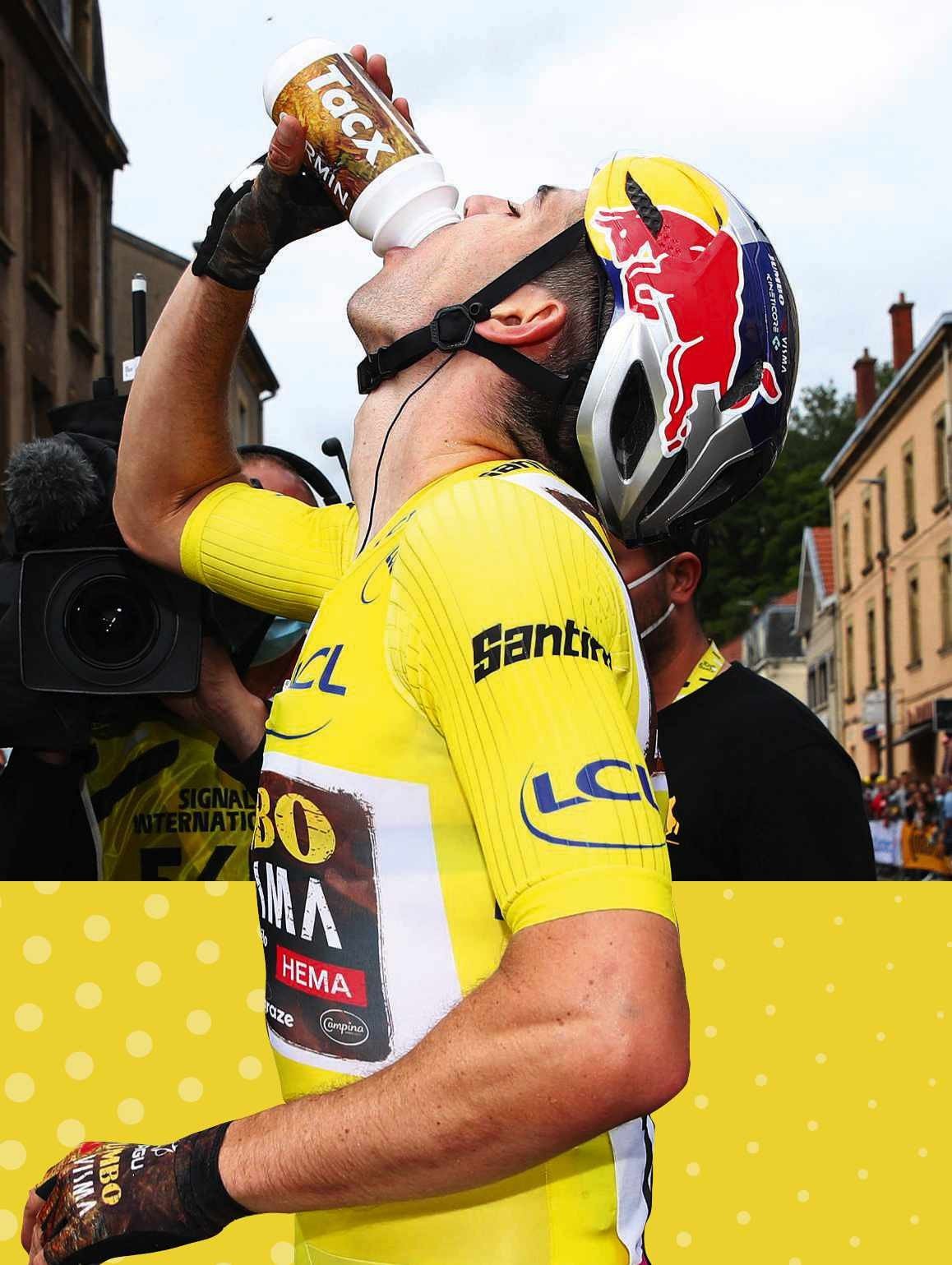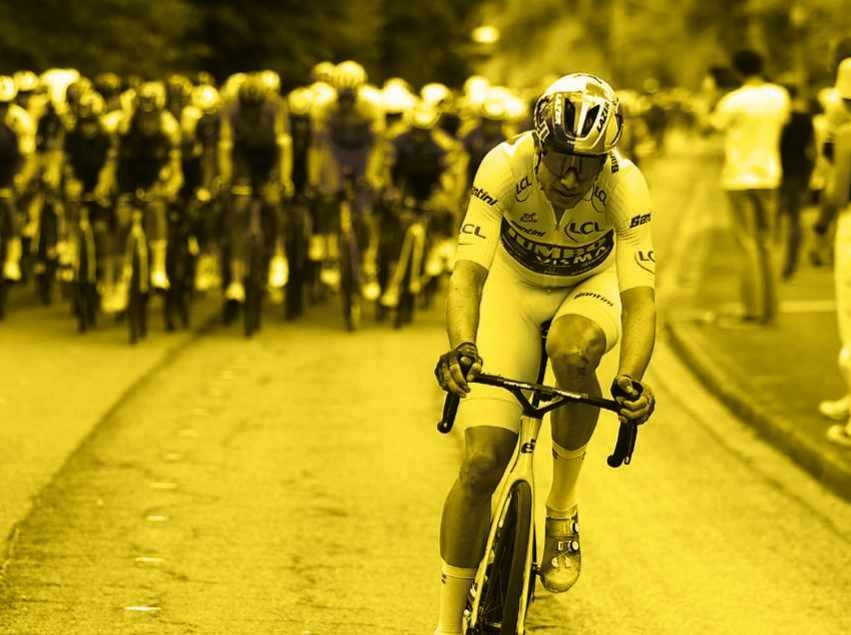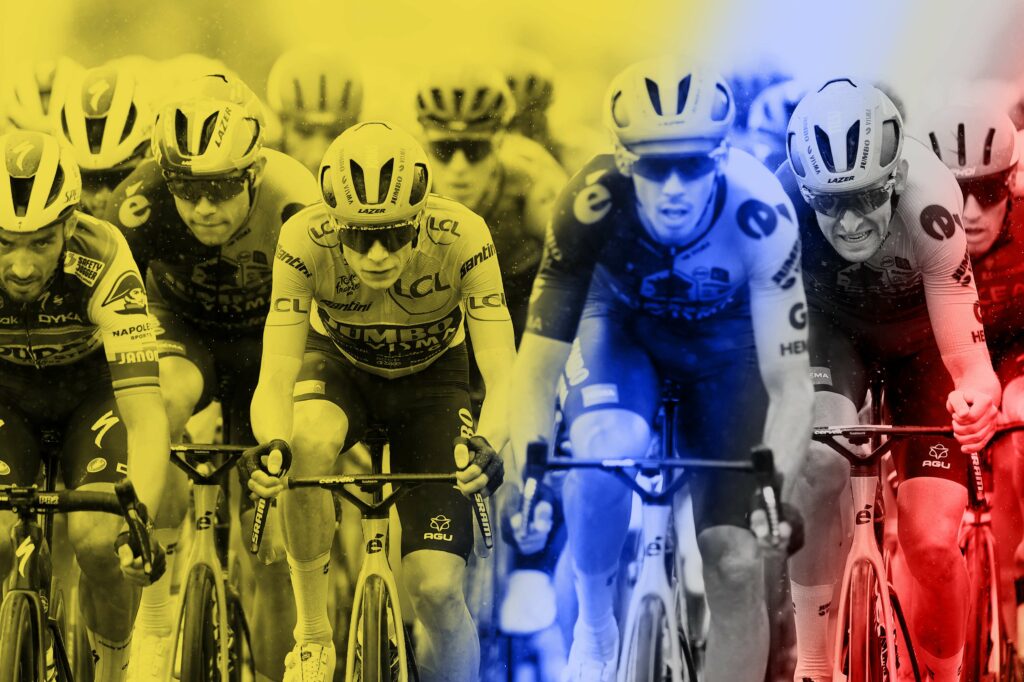
How to win the Tour de France
What does it take to win a stage of the Tour or even the race itself? Cycling Plus investigates the physiology and skills required to triumph in the world’s biggest bike race
1 FUEL TO THE FIRE
Tailoring nutrition on the go
When it comes to performance nutrition, few teams can match the rigour of current champion Jonas Vingegaard’s team Visma-Lease a Bike. Sports nutrition scientist Asker Jeukendrup has worked with the Dutch outfit for many years and charted the lengths they go to in one of his popular webinars.
“Planning for the Tour de France starts months in advance,” he explains. “We know what the route is and then make a series of nutritional predictions for each stage. These are based on who’s going to ride the Tour and a rider’s physiology. For each stage and the potential role and goal of each rider, we can then predict their power output and intensity of effort, and so can predict energy expenditure and carbohydrate use.”
This is where the team chefs come in. With this information, they can start to formulate meals for each stage. This can then be tinkered with as soon as the stage is over. “When the riders stop their power meters, all the data, including power output and calories burnt, is sent to the Cloud. The chefs can then work with live data and adapt their meal plans if necessary.”
“We know what the route is and then make a series of nutritional predictions for each stage”
A real-life example is from stage six of the 2022 Tour de France, where Wout van Aert sat in the break for most of the day before riding the last part solo. “We based our calculations on Wout being in the break but could see he was on form so increased his predicted power output, which meant a greater carbohydrate intake,” said Jeukendrup “Once he’d crossed the line, we were still below his actual power output so upped his carbohydrate intake again.”
This precision is all about delivering peak performance while maintaining a strong immune system. Which they’ve recently taken further, announcing that they’re using AI and machine learning, which has increased the accuracy of nutrition predictions from 52% to 82%. Fuelling peak performance just got that bit more cutting edge…
2 POWER GRAB
How to win a sprint
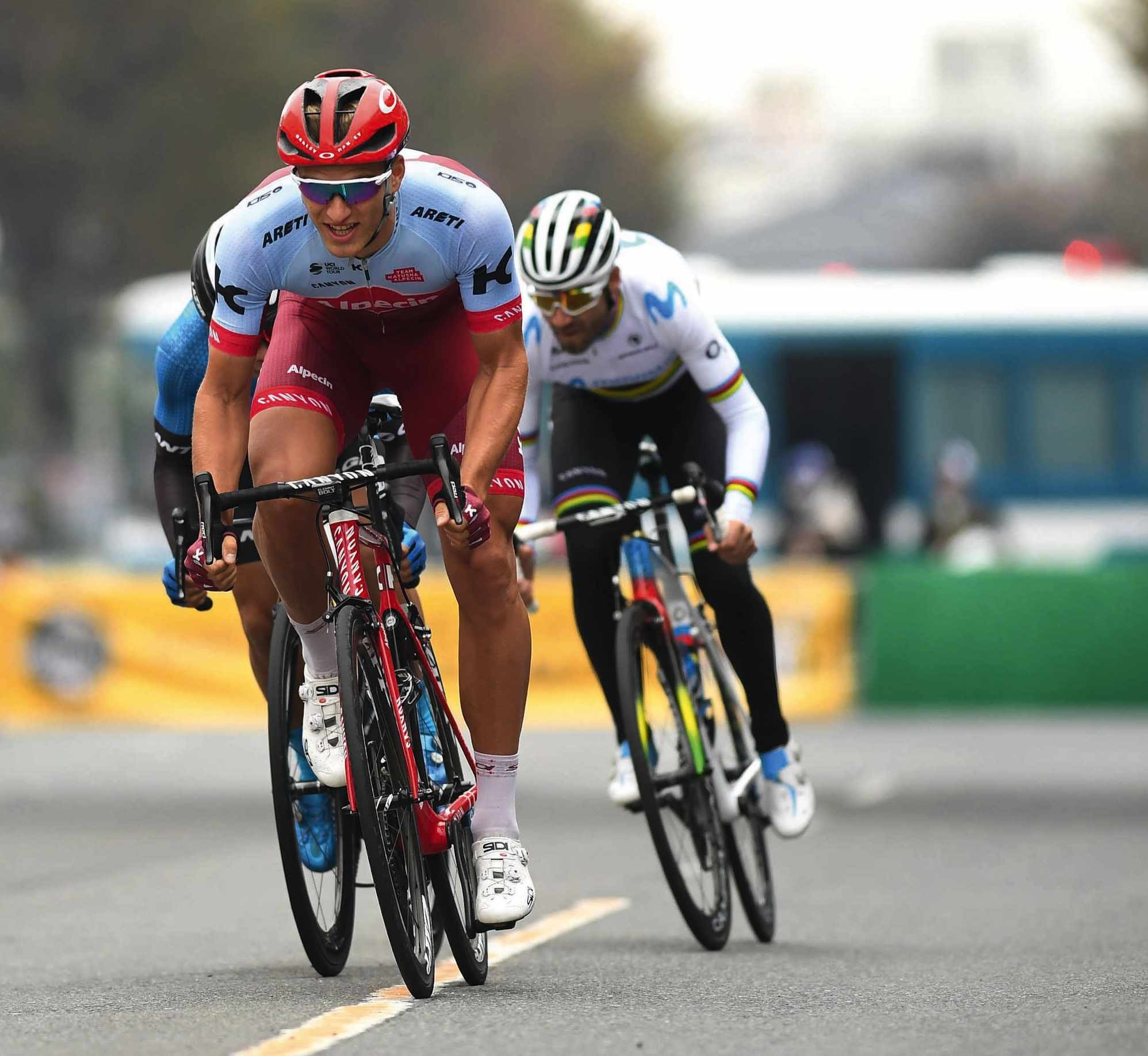
Last year, I attended the Science & Cycling Conference in Bilbao, a few days before the Grand Départ. Between seminars, I grabbed a coffee with Teun van Erp. The Dutch sport scientist at Tudor Pro Cycling also used to work at Argos-Shimano (now Team dsmfirmenich PostNL), where he trained ace sprinter Marcel Kittel.
When Kittel retired in 2019, van Erp asked Kittel if he could study his power data to better understand what it takes to win a sprint. The German agreed, so Erp dug into his power files from 21 sprints at the Tour de France, 14 of which resulted in stage victory.
“Sprints ranged from around seven to 17 seconds during which the mean power output ranged from 1,026 watts to 1,576 watts,” van Erp explains. “Average speed during the final bunch sprints ranged from 52 to 73kph.” All of this was achieved via a gear ratio of 53/11 and mean cadence of 103 to 121rpm.
That explosive power, says van Erp, was higher earlier in his career at Argos-Shimano up to 30secs out from the line than when he raced for Quick-Step, due to better positioning. “That’s not surprising as at Shimano, usually the whole team supported him, while at Quick-Step it might just be three or four as Dan Martin would be riding for GC. Argos were also often at the front, meaning Kittel wouldn’t enjoy the same aerodynamic ‘bubble’ as further back. However, because the positioning wasn’t as optimum, Kittel needed to generate greater levels of power when 30secs and 15secs from the line to take the win.”
“The focus was on high weights and low reps which, for Kittel, meant pushing around 120kg many times”
How did Kittel train this tactical acumen and explosive power? When it came to teamwork, Kittel and crew spent many hours practising the leadout in both training and early season races. As for training, it was tricky. “You need to have both the capacity to generate explosive power while maintaining the endurance to ride 21 stages and over 3,000km,” says van Erp. In Kittel’s case, this meant long rides complemented by sprint and gym work, specifically squats and core workouts. His focus was on high weights and low repetitions which, for Kittel, meant pushing around 120kg many times. It meant his fast-twitch muscle fibres were primed and ready for another stage victory.
3 HIGH IDEALS
How altitude makes a difference
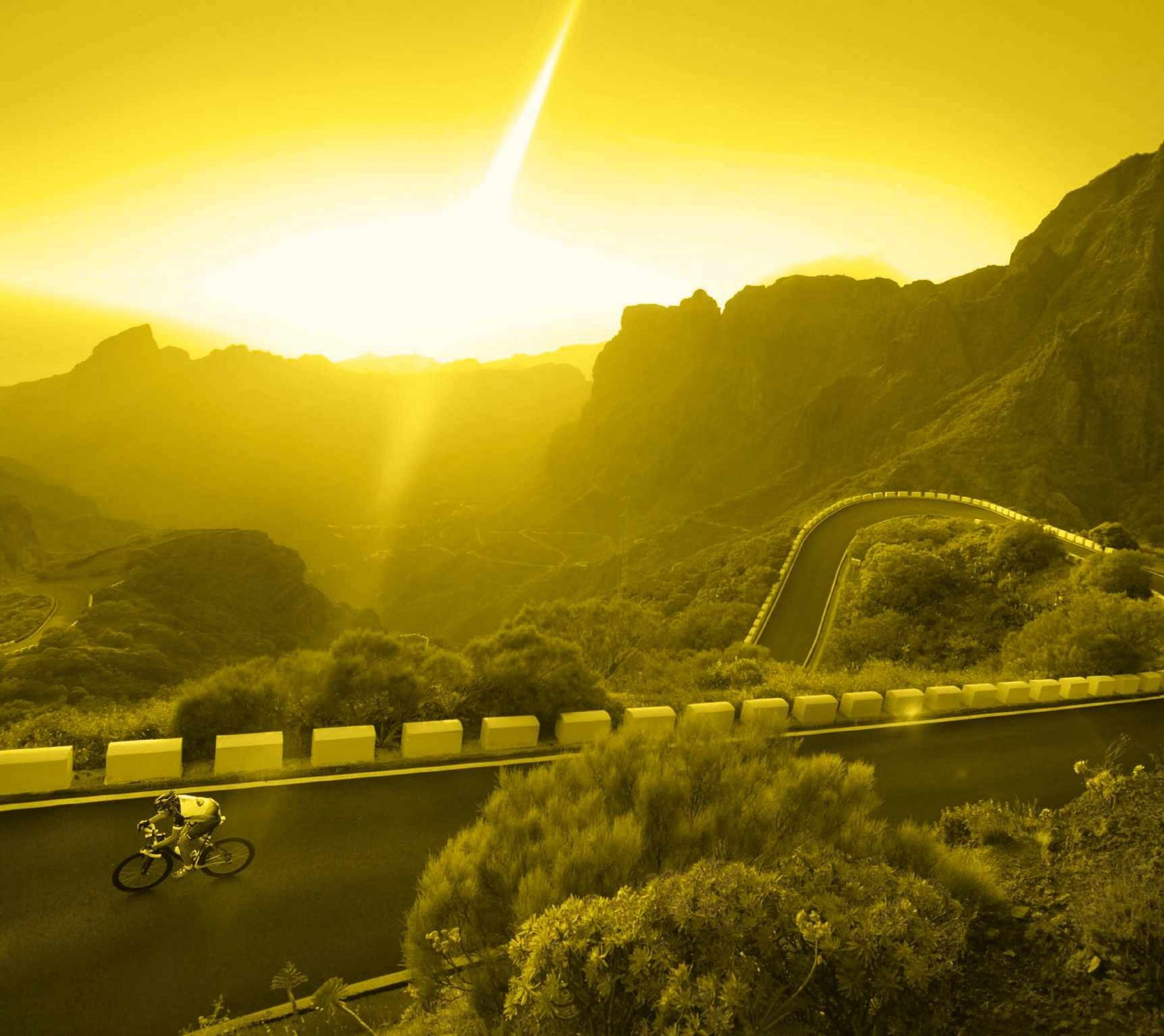
At the end of last year, Mathieu Heijboer, Team Visma-Lease a Bike’s head of performance, revealed how Jonas Vingegaard and the Dutch team formulated a plan to neutralise the immense threat of Tadej Pogačar and crank up their chances of retaining the 2023 Tour.
“In my opinion, the biggest difference from [2022 and 2023] was the consistency of Jonas’ training,” Heijboer said, explaining that the Dane has struggled with tendon injuries in the past. “Jonas didn’t race much, but that helped him be consistent almost the whole way through the season with his exercises and training. We believe this was essential to the Tour.” The exercises focused on bolstering his tendon. As for the training, much of it was at altitude, in his case often Spain’s Sierra Nevada and Tenerife.
Altitude training is nothing new, as it helps riders to improve their blood profiles. “There’s a very tight relationship between VO2 max and haemoglobin mass,” says exercise physiologist Iñigo Mujika. “Studies show that a 1g increase in haemoglobin mass increases VO2 max by around 4ml/min/kg. A further study reveals that for every 100hrs at altitude, haemoglobin mass increases by 1.1%. As VO2 max is one of the limiting factors when it comes to an endurance sport like cycling, its benefits are clear.”
“A study has shown that for every 100hrs at altitude, haemoglobin mass increases by 1.1%”
Mujika adds that there are non-haematological benefits to altitude training, too, which revolve around boosting the activity of HIF1A or hypoxia-inducible factor-1. “This is present in every bodily tissue as it regulates oxygen homeostasis, while it also controls the acute cardiovascular and respiratory responses to hypoxia [low levels of oxygen in body tissues],” he says. “In fact, its benefits are vast and include accelerating the development of new blood vessels; shifting up the activity of glycolytic enzymes for proficient carbohydrate metabolism; and taking dopamine synthesis to another level for better ventilation.” The Basque exercise physiologist is an altitude authority and has written papers on the periodisation of altitude training. “If you’re in the base phase, you might train and live high in an effort to raise haemoglobin mass and aerobic capacity. Then you might have another block early in the racing season with the main goal of increasing performance. You might plan repeated sprinting hypoxia to maximise training adaptations, and then you might have a final boost of altitude before a race, with a taper commencing towards the end of the camp.”
In short, there’s evidence that we have a ‘hypoxic memory’, which enables riders to acclimatise more quickly to altitude at subsequent camps. This then means that the training can be of a higher quality (with greater volume and/or intensity), which, in turn, means that the overall training stimulus is heightened.
4 UPWARDLY MOBILE
Mastering power-to-weight for the climbs
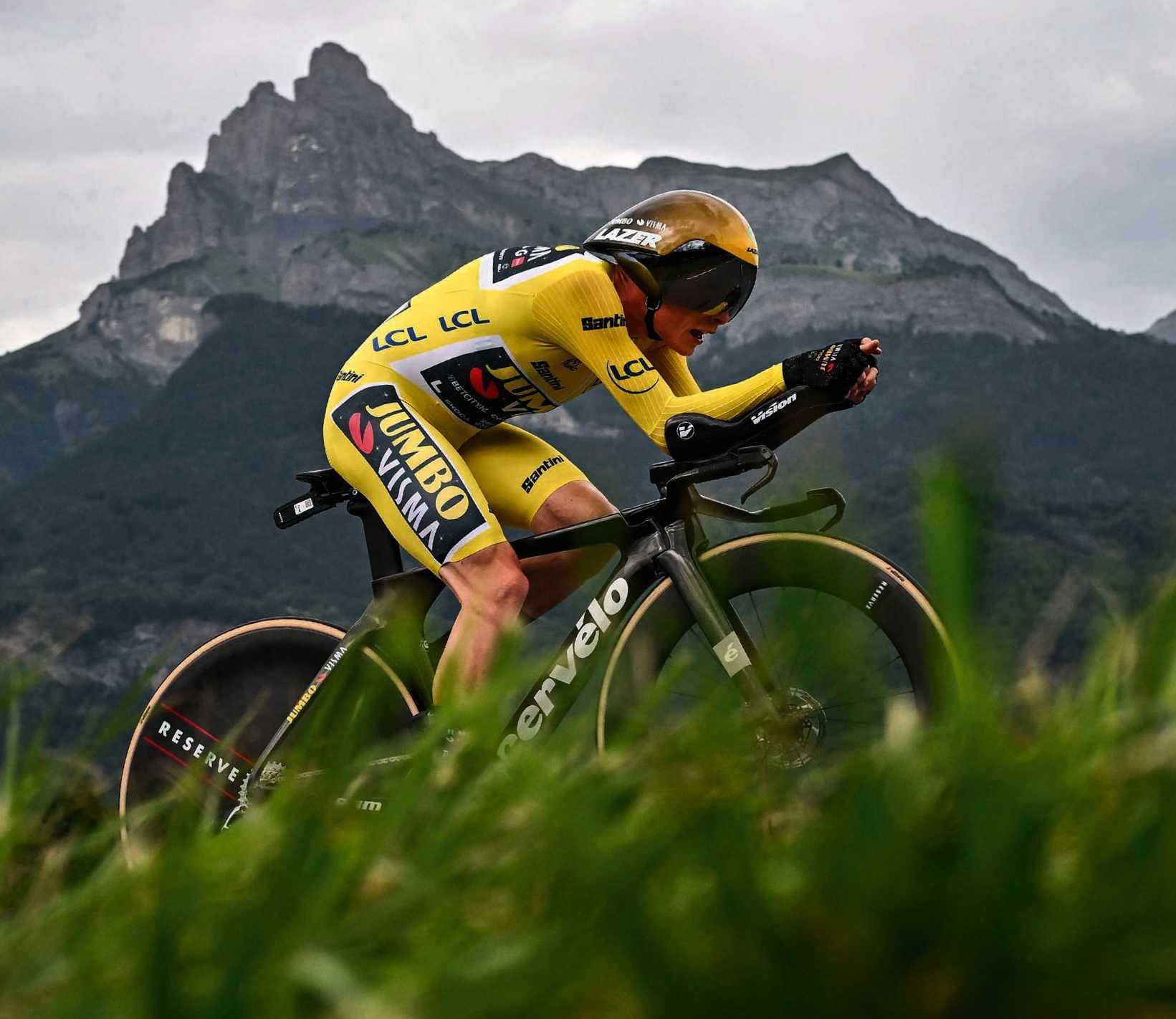
Cycling coach Dan Healey worked with seven-time Grand Tour winner Alberto Contador at Tinkoff-Saxo so he knows his stuff when it comes to forging climbing power at the highest level.
“What is a good watts-per-kilogram (W/kg) figure for climbing,” he asks? “It depends as I’ve got numbers around power-to-weight from 1min efforts to one-hour long climbs. So 6 W/kg if you’re doing a 1min effort is rubbish. But over an hour it’s good. That’s the figure that gets bandied around as it’s usually from a 20min threshold test. But world-class is over 6W/kg.”
Jonas Vingegaard reportedly generated 7.6W/kg when ascending the Côte de Domancy (6.05km @ 6.84%) on his way to winning last year’s 16th stage time trial, where he gained a massive 98 seconds over 22.4km on Pogačar. How do world-class climbers reach these W/kg?
“You make them fit, stronger and then more powerful before looking at body weight,” says Healey. “The fit part is general training, the strength part is generally low-cadence work on the bike, and then you move onto a phase of rapid application of force.”
“You’ve then got to bring body weight down in a slow and controlled manner,” Healey adds. “When I was with Tinkoff, we’d have a 10-week period where the riders would weigh food and keep food diaries. Then over the three blocks to tie in with the training – general, strength, power – you’ll do test sets in the early part of the phase. So, you might burn 2,000cals for an easy ride, 3,500-4,500cals for a harder ride, and then 4,500 and above for very hard rides. Then you set up menus based off that for the guys seeking a calorie debt.”
“Healey is a protein disciple, advising his riders to eat at least 2g of protein per kg of bodyweight”
Broadly, the calorie deficit arose from playing around with carbohydrates as Healey is a protein disciple, advising his riders to consume at least 2g protein per kilogram of bodyweight, which is up there with bodybuilders.
This safe calorie deficit often involved peaking at the Tour. “An example I have isn’t a climber but a rouleur-type rider, who we dropped from 78kg in the spring one-day races, where you need to be heavier, to 72kg at the mountainous Tour. We did this through his training but also by closely monitoring his SRM power data.
“As soon as they can’t do certain reps at a high power and are complaining of fatigue a little bit more than normal, then they’re obviously flat and when they’re flat, that might mean they’re using protein as fuel – more technically turning it into glucose through a process called gluconeogenesis – which could mean they’re eating muscle. Clearly you don’t want that, so the trick is to have small, protein-heavy meals often.”
5 DOWN IS UP
The underrated skill of descending
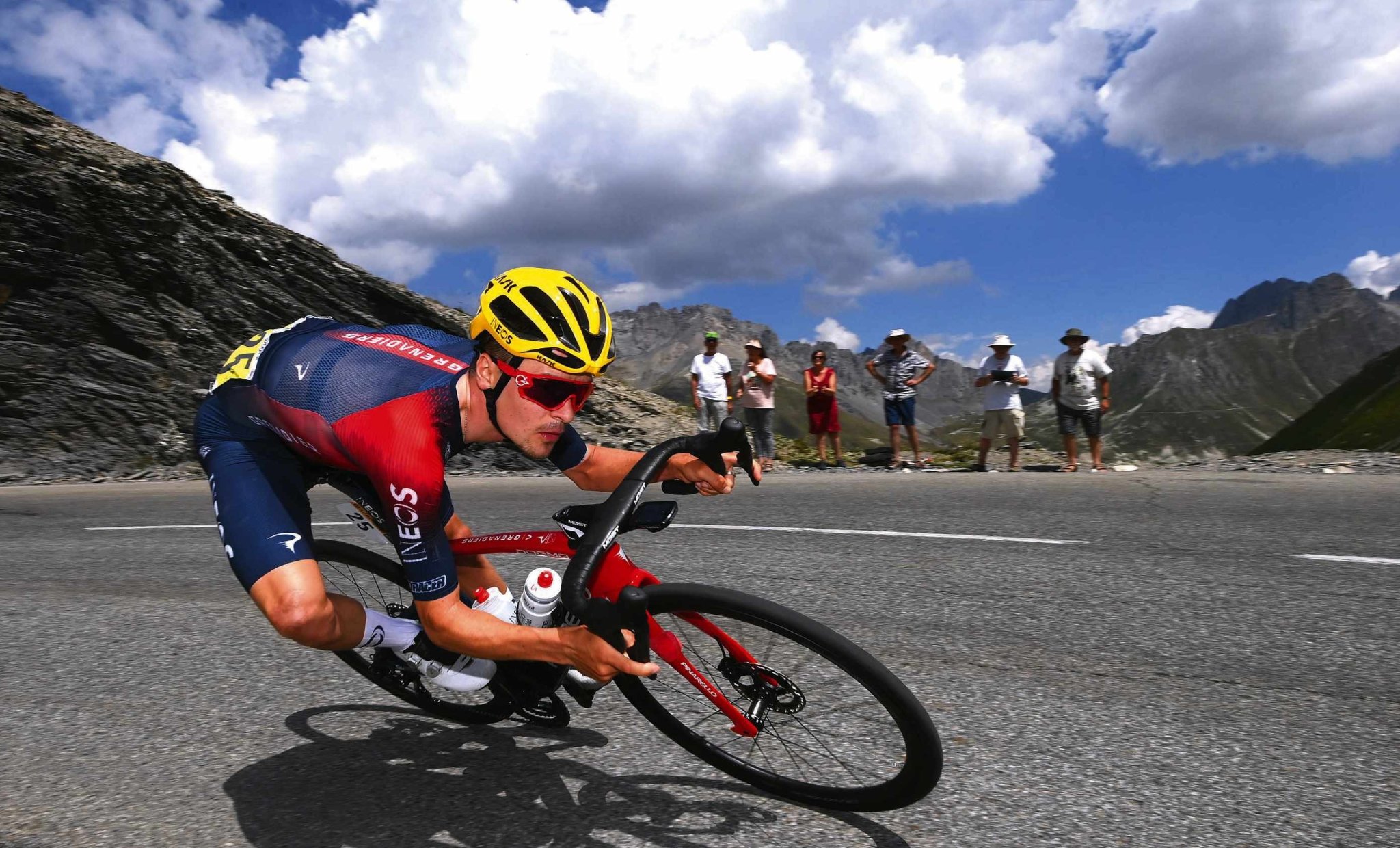
Much is made of climbing mountains, but as Tom Pidcock’s masterclass at the 2022 Tour showed, descending is a vital skill that can be the difference between victory, defeat and injury.
Oscar Saiz is a former Downhill mountain biking pro and now descending coach to numerous road stars. “To me there are two areas that make a good descender: the cognitive side and the bike-handling side,” says Saiz. “Someone might have wonderful technique on the bike but when they’re on the downhill, they don’t have the cognitive ability to absorb and interpret the information ahead.” To improve this, Saiz works with his riders in the classroom, showing good form, before taking it out on the mountain. “You should pay attention to your body position first, whatever level you are,” he says. “You then work on the skill of reading the road. I’ve seen riders driving a car and can already see their skill of reading is poor. So, the best thing is to practise on a quiet, local road you know well.
“At an approaching corner, establish different entry points and change your line, seeing how you react. I like riders to maximise their brakes. Take that local road, set a braking point, brake at ‘A’ and see where you finish (‘B’). How long does it take you to slow down? Reduce those braking distances, coming closer to the corner, and see how you manage.”
“Learn to be precise about judging entry points, where to hit the apex and how to exit”
As for bike position, Saiz asks his riders to focus on how they feel when tilting their bike. “If I’m working on a rider’s position, we might focus on just one or maybe two corners. Learn to be precise about judging distances and entry points, where to hit the apex, how to exit and at what point.”
So, who are the downhill demons? Matej Mohorič, Tom Pidcock and Julian Alaphilippe. “They are fast and less stressed,” says Saiz. “People think I’m only about saving watts and the legs, but you’re not only saving the legs, you’re saving the mind. The psychological control saves energy.”
6 WE GO AGAIN
The powers of recovery in a three-week race
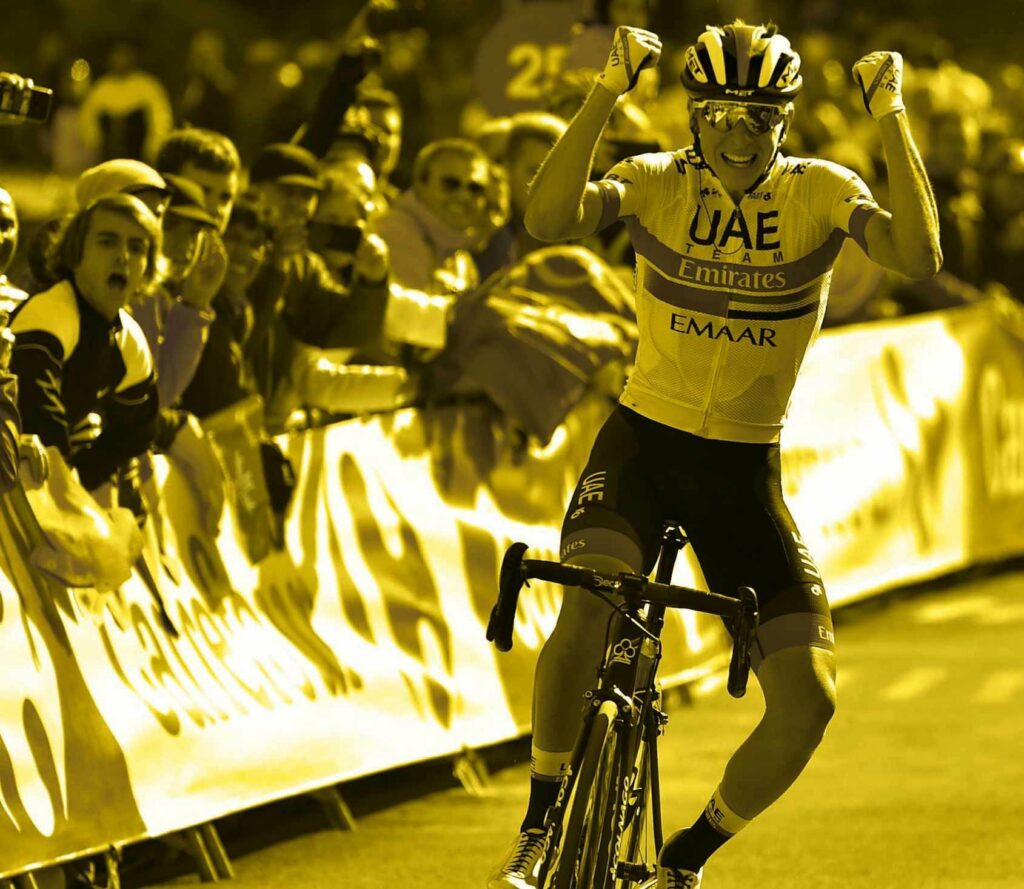
“We’ve developed a platform for what’s called ‘metabolomics’. With a few drops of blood, we can analyse between 1,000 and 2,000 parameters of the body,” explains Iñigo San Millan, who juggles clinical academic work with a consultancy role at UAE Team Emirates, the team of Tadej Pogačar. “We can understand how the body functions at a level that we’ve never seen before.
Mitochondrial function, cell oxidation, glycolysis, anaerobic capacity, catabolic capacity… We can identify differences between cyclists and see what makes a truly elite athlete.”
By analysing Pogačar’s blood, San Millan discovered that the Slovenian has a huge ability to recycle lactate. As many of you who’ve endured the ‘burn’ will know, lactic acid is a by-product of working hard and burning through carbohydrate to produce energy. Although it’s been perceived as the enemy in exercise, it’s really just got bad PR: you can recycle lactate to generate more energy.
“The problem is, when a rider’s sprinting or climbing, they generate a huge amount of lactate,” says San Millan. “This lactate builds up and hydrogen ions associated with lactate increase acidosis of the muscle micro-environment, decreasing contraction capacity [power output]. That’s why it’s critical to clear that lactate. Pogačar has the greatest capacity to clear this I’ve ever seen.”
“While some riders might be burning 75% carbs and 25% fat, Pogačar might be the opposite”
Pogačar’s ability to recycle lactic acid for energy is the proficiency of his mitochondria, which are the organelles in your cells that fire through fuel for energy. Riders such as Pogačar are fat-burning machines, meaning that while some riders might be burning 75% carbs and 25% fat at a reasonably high intensity, the Slovenian might be the opposite. In endurance sport, that’s crucial because it spares precious glycogen [the body’s stored form of carbohydrate] for the hard efforts.
San Millan credits the field of metabolomics for guiding training sessions, race choice and even team strategy. “At the 2019 Vuelta, many thought we were crazy to have a 20-year-old Pogačar lead the team in his three-week stage race debut. But we knew from his parameters that he could not only recover quickly between in-stage efforts but between stages, too.” It paid off with three stage wins.
